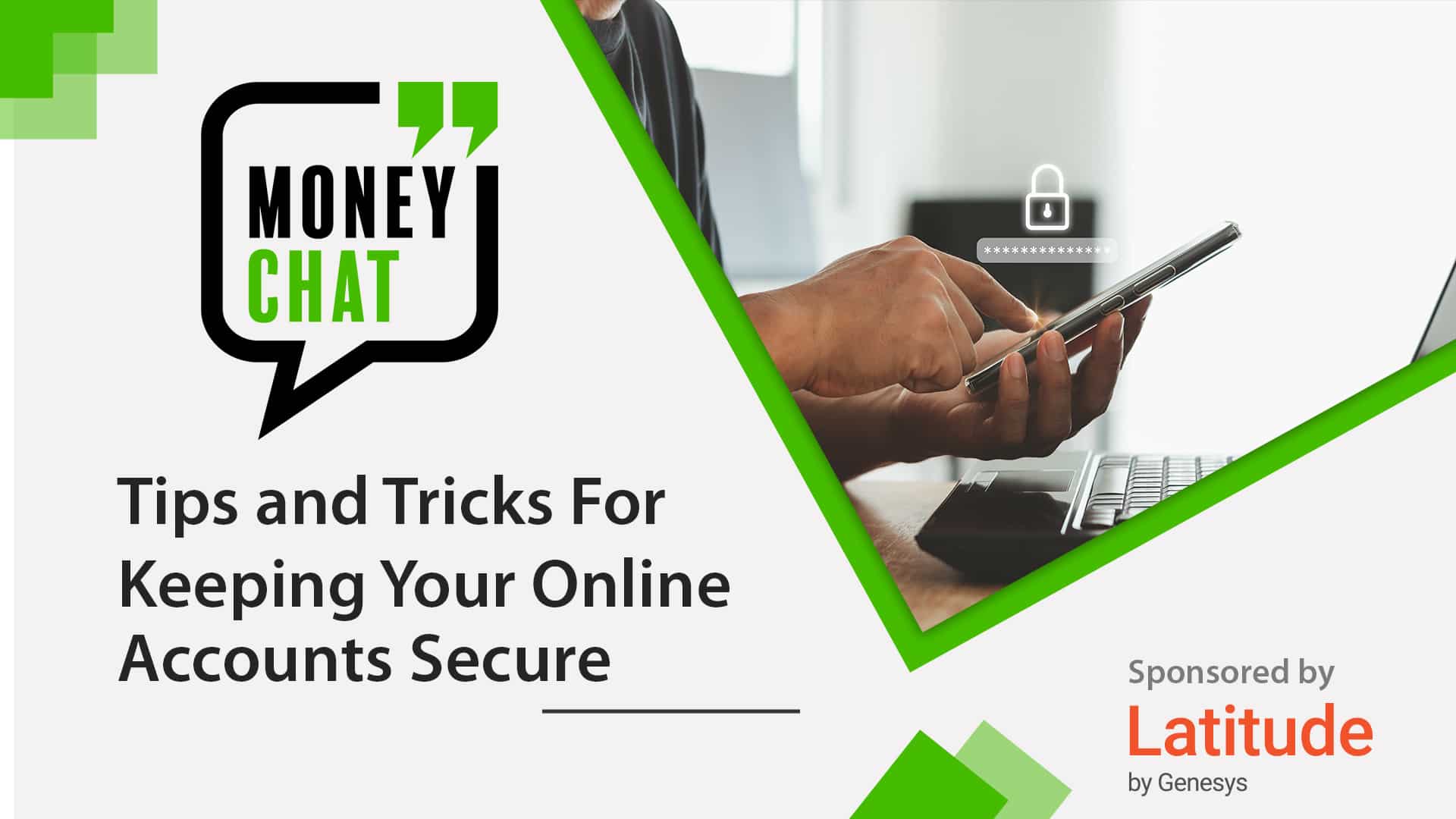
Tips and Tricks For Keeping Your Online Accounts Secure
As our lives, financial accounts, and personal data increasingly move online, keeping our personal information secure has become more important than ever. World Password Day, celebrated on May 4th this year, serves as the perfect reminder to keep our online accounts safe.
In this Money Chat, we will go through six key tips and tricks for keeping your online accounts secure against any standard attempt at breaching your personal data.
The Six Fundamentals Of Online Security
Online data security in the modern digital age is tricky. Between automated phishing schemes, targeted financial attacks, and “hacking” programs that gain access to swaths of information at a time, there is no shortage of attempts to secure your personal data. However, following these six key steps will not only reduce your chances of losing any data to automated phishing scams but also keep your information secure against even the most targeted attacks.
1.Use Strong Passwords
One of the most important things you can do to keep your online accounts safe is to use strong, unique passwords for each account. A strong password should be at least 12 characters long and include a mix of uppercase and lowercase letters, numbers, and symbols. Be sure to avoid using easily guessable information, such as pet names, birthdates, or common words. Instead, consider using a passphrase that is easy for you to remember but difficult for others to guess.
You will also want to avoid reusing passwords across different accounts, since if one account is compromised, all your other accounts will be at risk. Integrated platforms like Google and Apple also now have built-in “recommended” passwords that utilize randomized strings of letters, numbers, and symbols.
2.Enable Two-Factor Authentication
The newest form of data security being integrated into almost every website is two-factor authentication (2FA). 2FA is an extra layer of security that requires you to provide a second piece of information, such as a code sent to your phone or a biometric identifier, in addition to your password to access an account.
Enabling 2FA can significantly reduce the risk of your account being compromised. 2FA examples like Apple’s FaceID or most smartphones’ fingerprint scanners have revolutionized the world of additional data security.
3.Use a Password Manager
Using a password manager can make it easier to use strong, unique passwords for each account. A password manager stores all your passwords in an encrypted format and can generate strong passwords for you. You only need to remember one master password to access your password manager. Many password managers also offer additional features such as 2FA and the ability to securely share passwords with others. Microsoft, Google, and Apple offer password storage and security at no additional cost to using their services. Apple and Google will also provide recommended passwords that are too difficult to remember but can be stored through their password management system.
If you choose to use a password manager, ensure that 2FA is enabled for your password manager account to guarantee that all your passwords are secure.
4.Keep Software Up-to-Date
Updating software can be tedious. With new security updates seemingly every day, launching and relaunching your browser, computer, and applications takes time. However, keeping your software up-to-date, including your operating system, web browser, and other applications, is crucial for security. Software updates almost exclusively include security patches that fix vulnerabilities that could be exploited by attackers. Set your software to automatically update whenever possible. So while updates are happening constantly, and without end, those security updates are vital for stopping the latest phishing and hacking attacks.
5.Be Careful with Emails and Links
Phishing is a common tactic used by attackers to steal sensitive information. They do this by sending fake emails or messages that appear to be from a legitimate source, such as your bank or a recently visited website. These emails often contain links that, when clicked, can download malware onto your device or take you to a fake website that looks like the real one, where you’ll be prompted to enter your login information. Be cautious when clicking on links in emails, especially if they seem suspicious.
To avoid common phishing attempts check these few items before clicking or downloading anything from the email or message:
- Check the email or website: Most phishing attempts have close but not quite email addresses or URLs. Things like goggle instead of Google or Chased instead of Chase Bank.
- Hover over any download or URL links: A unique feature on Desktops is the ability to hover your mouse over any links in emails or messages you believe to be fake. Hovering over a link will give you a URL preview. Make sure it seems legit and isn’t a clearly fake forwarding address.
6.Regularly Review Your Accounts
The last step to take is the most mundane, but regularly reviewing your accounts can help you spot suspicious activity and take action before it’s too late. Check your account settings to ensure they reflect your preferences and look for any changes you didn’t make. Review your account activity to ensure there are no logins from unfamiliar locations or devices. If you spot anything suspicious, change your password immediately and contact the service provider. Some providers like Google even track your saved accounts and passwords for any suspicious activity.
Free Resources
Protecting your online accounts is essential in today’s digital age. Understanding these six steps can help you significantly reduce the risk of your accounts being compromised. The secret seventh step to staying vigilant online is expanding your understanding of the digital age through educational materials like Receivables Info’s Money Chat series or through our Resource page.
Have an idea for a Money Chat topic?
We want to hear from you! If you have a suggestion for a future Money Chat topic, please email us at [email protected].
The information contained in this article is meant to serve as general guidance for consumers and not meant to serve as comprehensive financial advice. For questions about your individual circumstance, finances, or accounts, please contact your creditor(s) and/or financial advisor directly.
Thank you to our sponsor, Latitude by Genesys
Latitude by Genesys® is a comprehensive debt collection and recovery solution for managing all pre- and post-charge-off accounts and workflow processes. It provides collectors and agents with the tools to manage the debt collection and recovery process and provides full functionality for the collector’s or agent’s desktop and deploys as a true zero-footprint, browser-based environment. Since 1996, Latitude’s focus has been to provide the most forward-thinking, attractive solution to the business needs of different people and companies in the accounts receivable management (ARM) space. Acquired by Genesys in 2016, Latitude is continually growing, innovating, and reshaping the technology expectations and customer experiences of ARM companies and their consumers.




